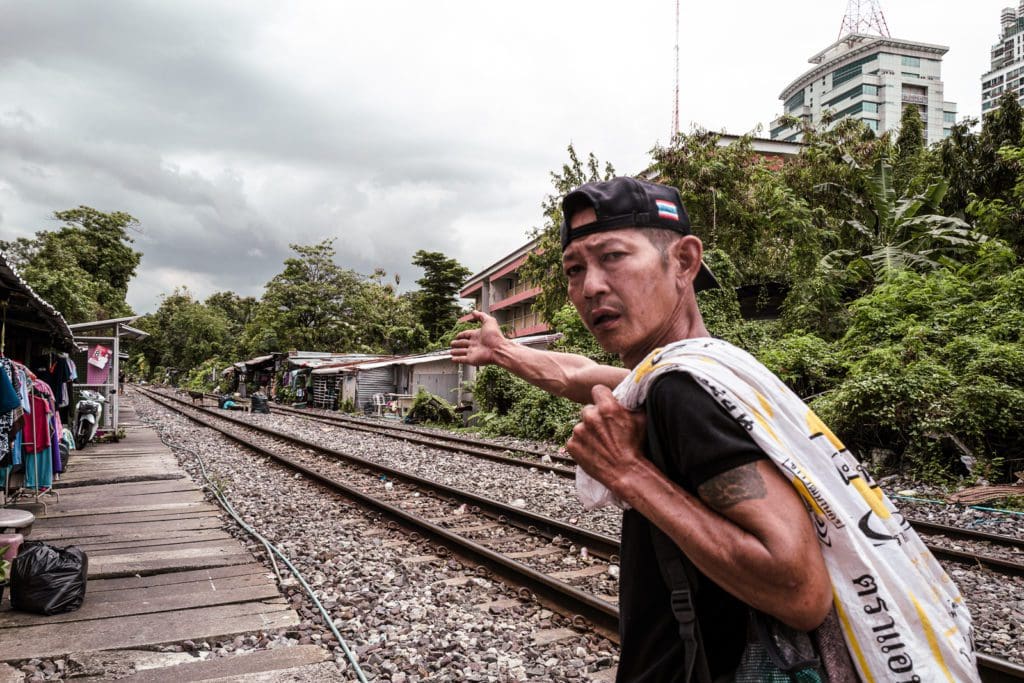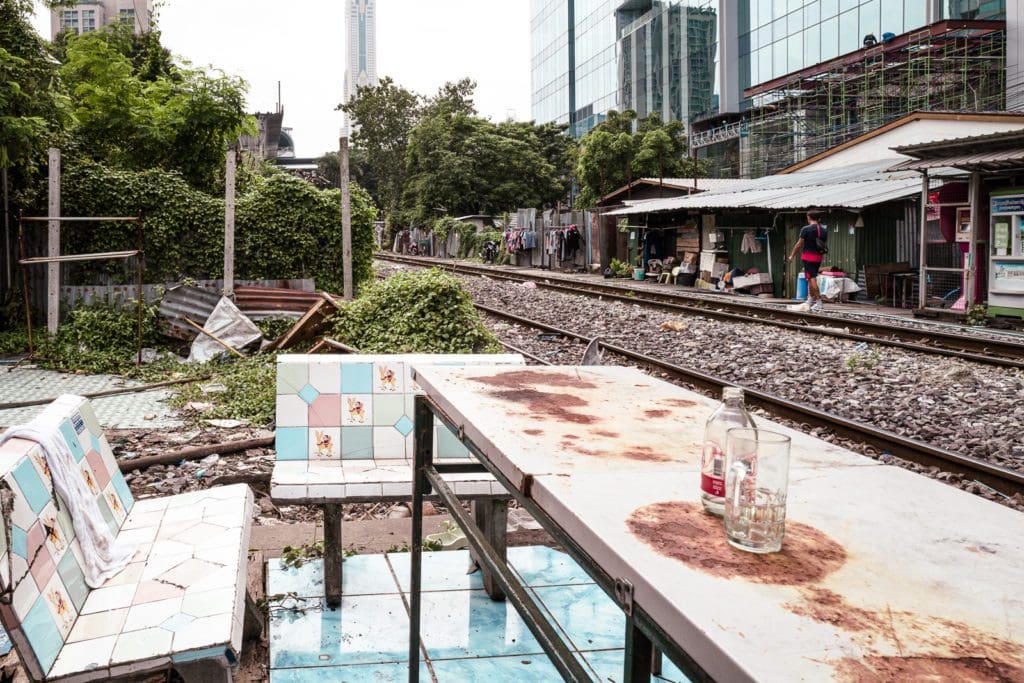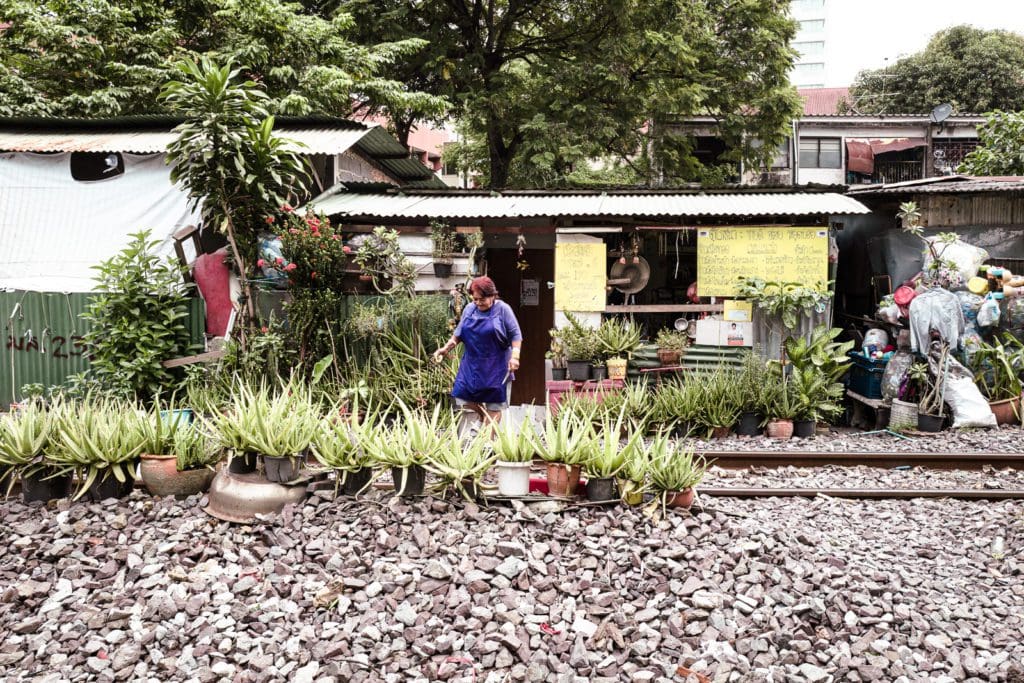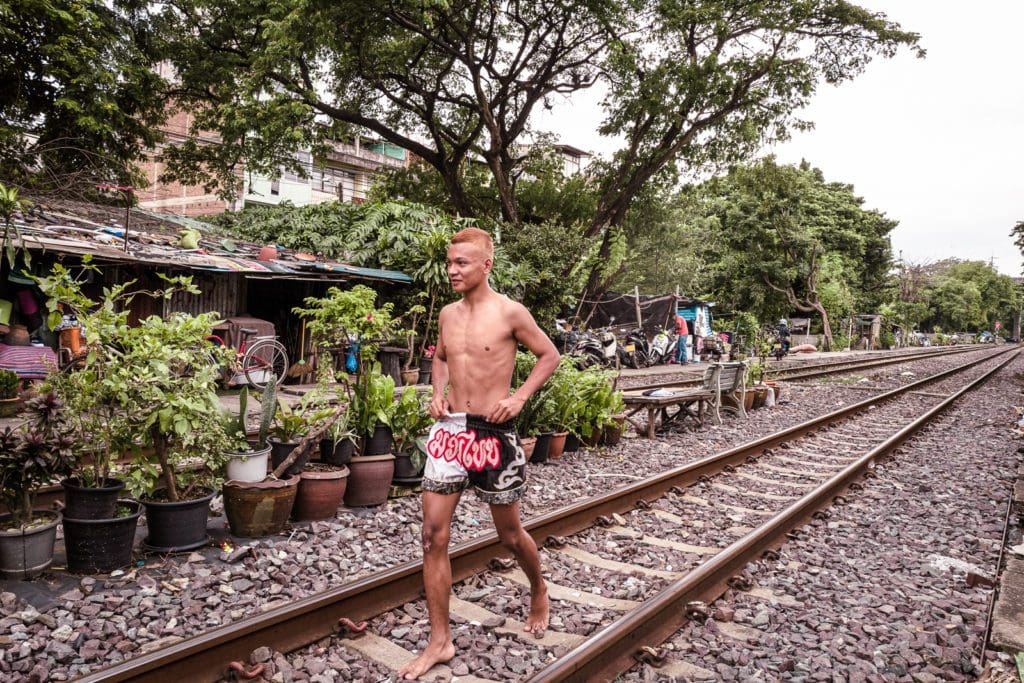Phaya Thai, Bangkok city centre. The railway crosses a significant crossroads. On the one hand modernity and busy life on the other a parallel existence along the tracks.
The construction of a bridge is interrupted. Just a piece of suspended structure that ends where the slow, silent life of people living a stretch of railroad track begins.
Their dwellings are mostly joints of sheet metal and wood surrounded by lush, dense vegetation that, oblivious, frames a precarious human condition. And it gives beauty.
A rusty sign with timetables and a stop that gives shelter to those waiting for a train to pass by.
Does a train really pass through here?
I walk and meet dogs, cats, crossing the tracks.
I recognize dogs and cats but with the wary expression of a difficult life.
A woman looks out. At the railroad’s edge everyday gestures flow, the space is sometimes so narrow that to pass we make ourselves thin.
I cross glances proud and devoid of any judgment. I feel good. I pass through their existences and feel a sense of lightness.
I enter a dwelling, some family members are there. Apparently they do nothing. A slight smile and the gesture of joining hands as a sign of mutual respect is the greeting. Everything is so fluid in the harshness of a life lived with dignity.
Young people are fighting. Roosters fight. Men wait.
Now it becomes irrelevant whether or not a train passes by. A profound human experience remains in me.

A piece of urban railway in Phaya Thai
Phaya Thai is one of the 50 districts of the Thai capital. Built in 1966, it is now located in the centre of Bangkok. Host to a major road and rail transport artery, it is also an affluent residential district. It is well known for the tree-lined Ari district, elegant cafés and trendy restaurants, and the Wat Phai Tan Buddhist temple with its exquisite arched roofs. Until the early 1990s, the territory of Phaya Thai was progressively reduced, dividing it into other districts established ad hoc, including Ratchathewi and Pathumwan.
What is striking in the Phaya Thai district is the constant contrast between the modernity and elegance of the large buildings and shopping malls. The high-rise elevations – almost hidden by majestic trees and vegetation that seem to want to take over every inch left free – and the long second-level railway line that cuts through the district.


As is often the case, even in Bangkok – a metropolis populated by almost 11 million people and with a density of just under 7,000 inhabitants per square kilometre – residential areas are dotted with social and housing clusters of a much lower standard. This section of the urban railway in the Phaya Thai district is one such case, as well as the one in Khlong Toei and those located along the routes from Hua Lampong station in central Bangkok or the more peripheral Thon Buri station. These are decadent slums, sometimes regularly listed in the capital’s urban plan. Entire families, especially young people, leave the villages in Thailand’s hinterland to seek their fortune in Bangkok or are attracted by the modern internationality of the capital. However, they often find themselves living in dilapidated shacks built from material salvaged fortuitously along railway lines. Besides the lack of legal access to basic services such as running water, electricity and rubbish collection, slums are also hotbeds of disease. There are many cases of dengue, especially during the monsoon season. To these already unstable living conditions is added the danger of fire or forced eviction when the area is affected by other urban development projects.
According to official figures provided by the Thai government in 2000, 10% of Bangkok’s residents (about 1 million souls) live in slums. Of these, about 60 per cent live in agglomerations along the railway lines of the megalopolis. In the Human Development Report, compiled by the United Nations Development Programme (UNDP), Thailand is ranked 74th out of 177 countries.


